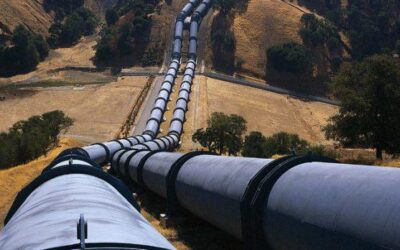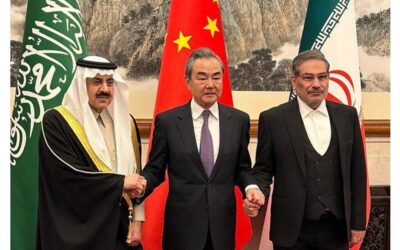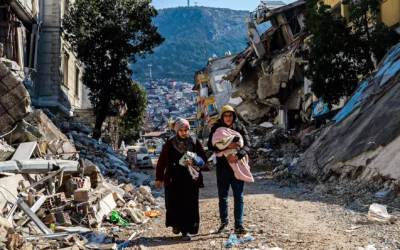After almost two months, the protests and demonstrations in Iran triggered by the barbaric murder of Masha Amini show no signs of stopping. The young Kurdish woman had been arrested on 13 September, while in Tehran, on charges of wrongly wearing a headscarf. The girl died in hospital in unclear conditions after being in a coma for three days.
The revolution of 1978-1979
Until 1978, Iran was a trusted American ally in the Middle East. The regime of Shah Reza Pahlavi ensured a high degree of stability in the region, but had the major flaw of not caring about the population. Starting in 1963, billions from oil sales were used to support misguided economic investments, to buy state-of-the-art technology and military armaments and for the personal enrichment of the ruling elite at the time (the so-called White Revolution)[1]. The shah was therefore forced into exile and a Presidential Republic was established in place of the monarchy. However, it was not an Islamic revolution in 1978, but a people’s revolution against repression, corruption and poverty.
The main supporters of the protest movements were in fact animated by the desire to see their rights respected, to have greater political freedom and freedom of expression, to live in acceptable social conditions. Only later, i.e. from 1979 onwards, did the Islamist component led by Ayatollah Ruhollah Khomeyni gain the upper hand over the other parties[2].
The protests of 2022
Forty years later, the squares and streets of many Iranian cities are once again filled with people protesting and demonstrating. The spark that ignited the fire was the death of young Masha Amini. However, what is happening does not have a ‘simple’ religious significance, but represents a criticism of the entire system of power. The population is not at all opposed to Shiism – 78% of people believe in God, the predominant religion in the country since the 16th century – but to its instrumentalisation. In fact, the Khomeynist revolution has created a dual system of power, one of the rational-legal type – according to the Weberian classification – and a theocratic one, which is expressed in the figure of the Supreme Guide and the Guardians of the Revolution and which is the real fulcrum of power in the country.
The protests of these weeks therefore have multiple reasons for being, and they have similarities with those of 1978 especially in terms of their social component.
A part of the protesters is made up of what was once the country’s middle – and affluent – class, of which the bazaars constitute a large component, which has progressively seen its earnings shrink[3]. The economy is in bad shape, saved by the revenue from the sale of oil. Foreign investment in the country has decreased due to the sanctions reintroduced after the US withdrawal from the JCPOA, while year-on-year inflation has risen by around 40%, partly due to the Raisi government’s decision to end the special dollar exchange rate, used for the import of essential goods, the price of which has inevitably increased.
The level of unemployment is also high, especially among the young, another key component of the protest: unlike their parents, Generation Z is not a child of the events of 1978 and Khomeynist ideology, it has no ties with those ideals forged through rhetoric against the Western world and in the war against Iraq in the 1980s. It is a generation that has access to the Internet and therefore knows different models and lifestyles from those imposed by the Iranian theocracy. Above all, it is a forgotten generation, left behind, the result of the failure of the policies carried out over the past 15 years by the regime: young people protest against unemployment, demanding to be able to live in decent social conditions (between the ages of 15 and 24, the rate of people not working/studying/training is around 77%). They protest against the corruption and enrichment of the elites, especially the military – pasdaran and bassij -, who occupy positions of power within the country.
The last major social formation animating the protests of these days are women. The inequalities and severe economic hardships described above become more pronounced when analysing the country’s female population. The unemployment rate is double (13%) that of men, and there is also a very strong gender disparity in employment, with barely one in five women participating in the economy. However, what has been animating the demonstrations in recent months is above all the opposition to the obligation to wear the hijab, a symbol of the political and religious oppression that the Iranian ruling class has been practising since the early days of the Islamic Republic. Symbol, because it is through this and other measures – such as family law – that the state implements control over the lives of women, who are forced to live in a position of subordination to men.
Repression: extrema ratio or modus operandi?
Faced with protests, the regime does not seem willing to compromise. Just as in 2009 and 2019, it has not hesitated to use force to suppress discontent: summary arrests, as well as reports of police firing into crowds, are also characterising these protests. Control and repression seem to be the only weapons left for the elite to retain their power. A regime change seems unlikely, however, due to, among other things, the high level of securitisation that characterises Iranian society. How long, however, this vicious circle of protests and repression can last will also depend on exogenous factors, such as the results of the nuclear agreement, the war in Ukraine – which is leaving ever more room for manoeuvre for Turkey in areas such as the Caucasus and the Near East, Iran’s backyard – and the outcome of the forthcoming elections in Israel.
[1] Massimo Campanini, Storia del Medio Oriente, Il Mulino, Bologna, 2010, pp.159-160
[2] Riccardo Redaelli, L’Iran contemporaneo, Carocci Editore, Roma, 2011, p.51
[3] Ivi, p.18
Articolo di Andrea Meleri – taken from Istituto Analisi Relazioni Internazionali



